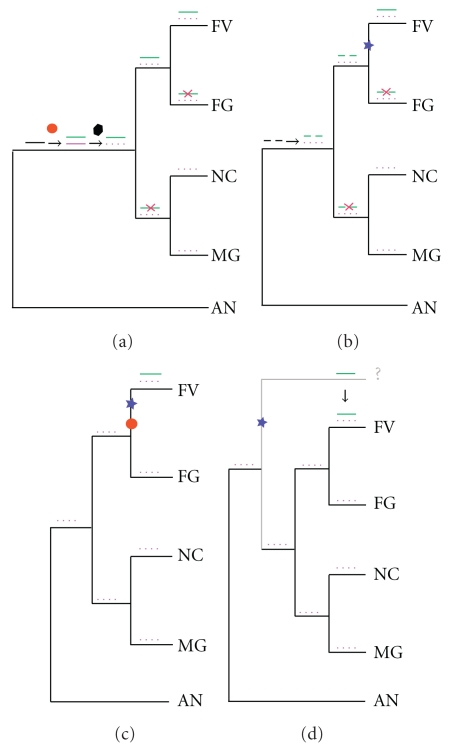Figure 3.
The four most likely scenarios giving rise to the current fumonisin cluster in F. verticillioides. The species represented on all four trees are: F. verticillioides (FV), F. graminearum (FG), N. crassa (NCU), M. grisea (MG), and A. nidulans (AN). A red circle represents a duplication event. A blue star represents an assembly and clustering event, while a disassembly is shown using a black square. Red crosses indicate a loss event. When the FUM genes, or their ancestral genes, are clustered they are represented by a short line. The line is dashed if the genes are not clustered. Two colors are assigned to the duplicated genes and green genes are ancestors of the FUM genes (or the current FUM genes), while pink genes are the paralogs of FUM genes (ones found in all other Sordariomycetes). (a) represents the vertical transfer where the ancestor processed a version of the FUM cluster. (b) The ancestor in this scenario contained the ancestral genes of the FUM cluster (scattered). (c) represents a recent event of duplication and assembly of the FUM cluster in an ancestor of F. verticillioides. Finally, (d) represents the horizontal gene transfer scenario.

